 1982 Opel Manta B (facelift 1982) Dimensions, Size & Specs
1982 Opel Manta B (facelift 1982) Dimensions, Size & SpecsMeasurements of the 1982 Opel Manta B, engineered for optimal performance and comfort
| Dimensions | |
|---|---|
| Length: | 4443-4475 mm174.9-176.2 in14.6-14.7 ft |
| Width: | 1670-1686 mm65.7-66.4 in5.5-5.5 ft |
| Height: | 1310-1320 mm51.6-52.0 in4.3-4.3 ft |
| Trunk Capacity: | 380 liter13.4 cu ft |
| Trunk Capacity (Max): | 490 liter17.3 cu ft |
| Weight Specifications | |
| Curb Weight: | 965-1065 kg2127-2348 lbs |
| Maximal permitted Weight: | 1345-1400 kg2965-3086 lbs |
| Tire Specifications | |
| Rims Sizes: |
|
| Tire Sizes: |
|
The Opel Manta B (facelift 1982) is a classic coupe produced from 1983 to 1988, representing an evolution of the successful Manta B generation with refreshed styling and updates. The coupe showcases balanced dimensions ideal for sporty driving as well as practical usability. The length ranges between 4443 mm and 4475 mm (approximately 175.0 to 176.2 inches), with a width varying from 1670 mm to 1686 mm (65.7 to 66.4 inches), providing a compact yet stable stance on the road. The vehicle's height is relatively low, between 1310 mm and 1320 mm (51.6 to 52.0 inches), contributing to its aerodynamic profile and sporty character.
Weighing in between 965 kg and 1065 kg (2128 to 2348 lbs) in curb weight, the Manta B facelift remains lightweight by modern standards, enhancing performance and agility. The maximum allowable weight ranges from 1345 kg to 1400 kg (2965 to 3086 lbs), ensuring it can carry passengers and luggage comfortably without compromising stability. The 380-liter trunk capacity (approximately 13.4 cubic feet) is practical for its class, and folding the rear seats expands storage to 490 liters (about 17.3 cubic feet), increasing versatility for longer trips or transporting larger items.
The Manta B facelift rides on 13- or 14-inch rims, paired with tire sizes of 195/60 R14 or 185/70 R13, contributing to its balanced handling and road grip. Overall, the 1982 facelifted Opel Manta B coupe merges stylish 1980s design with functional dimensions and respectable cargo space, making it a noteworthy example of compact European sports coupes of its era.
Discover the standout features that make the 1982 Opel Manta B a leader in its class
Have a question? Please check our knowledgebase first.
The Opel Manta B facelift (1982), produced from 1983 to 1988, has a length ranging between 4443 mm and 4475 mm. In imperial units, this translates approximately to 175.0 inches (14.58 feet) to 176.2 inches (14.68 feet). This compact coupe size makes it an agile and sporty vehicle suitable for varied driving conditions. The small variance in length depends on specific model trims or optional features. As a classic coupe, its length strikes a balance between sporty aesthetics and practical dimensions for urban and suburban environments.
The width of the Opel Manta B facelift (1982) varies between 1670 mm and 1686 mm, which converts to approximately 65.7 inches to 66.4 inches (5.48 to 5.53 feet). This moderate width provides the coupe with a stable stance while driving, aiding cornering and road handling. The width is narrow enough to facilitate parking in tight urban spaces, making it practical for everyday use despite the sporty styling. It also contributes to the car’s aerodynamic efficiency and overall compact footprint.
The height of the Opel Manta B facelift ranges from 1310 mm to 1320 mm, approximately 51.6 to 52.0 inches (4.3 to 4.33 feet). This relatively low height accentuates the coupe’s sleek, sporty profile, improving aerodynamics and giving it a low-slung aggressive look. From a practical standpoint, the lower height means a lower center of gravity, aiding in handling dynamics, though it may affect entry and exit for taller occupants. Overall, the height is well suited for sports car enthusiasts who appreciate style and performance.
The curb weight of the Opel Manta B facelift ranges between 965 kg and 1065 kg (approximately 2127 to 2347 pounds). This lightweight aspect contributes to the car's nimble handling, quick acceleration, and improved fuel efficiency. The relatively low mass ensures that the engine's power delivery is effectively translated into dynamic driving characteristics. Light weight also makes the vehicle easier to maneuver in city traffic and enhances braking performance, making it a well-balanced coupe in terms of driving dynamics.
The Opel Manta B facelift offers a luggage capacity of 380 liters (about 13.4 cubic feet) with the rear seats in their upright position. When the rear seats are folded down, this capacity expands to 490 liters (approximately 17.3 cubic feet). This makes the coupe surprisingly practical for its class, allowing for sufficient storage during regular use or extended trips. The ability to fold seats enhances versatility for larger items, providing flexibility despite the sporty coupe layout.
The Opel Manta B facelift came with rim sizes of 13 inches and 14 inches depending on the specification. Correspondingly, the tire sizes are 185/70 R13 and 195/60 R14. The 13-inch tires typically offer a comfortable ride with some absorption of road imperfections, while the 14-inch options enhance handling and sporty performance due to a wider and lower-profile tire. These tire sizes reflect the car’s sporty yet practical design focus, balancing comfort and driving dynamics.
Yes, the Opel Manta B facelift will comfortably fit inside a standard garage. Standard single garages typically have a width of about 2.4 to 3 meters (7.9 to 9.8 feet), a height of around 2.1 to 2.4 meters (6.9 to 7.9 feet), and a depth of 5.0 to 6.0 meters (16.4 to 19.7 feet). The Manta B’s dimensions—length from 4.443 to 4.475 meters (14.58 to 14.68 feet), width up to 1.686 meters (5.53 feet), and height around 1.32 meters (4.33 feet)—allow it to fit easily into a single-car garage with enough space to open doors and move around the vehicle. Its size ensures convenient storage without spatial constraints.
Compared to the Manta A, which was produced from 1970 to 1975, the Manta B facelift (1982) shows notable dimensional and design evolution. The Manta B is slightly longer (4443-4475 mm vs approximately 4250 mm for Manta A), wider (up to 1686 mm vs about 1620 mm), and maintains a low height (1310-1320 mm for Manta B compared to roughly 1340 mm for Manta A). These changes reflect Opel’s design shift towards a more modern, aerodynamic coupe with improved interior space and road presence. The increased width improves stability and handling, while a longer body enhances cabin comfort and luggage capacity. Overall, the Manta B is a more refined, slightly larger vehicle yet retains sporty appeal.
The Opel Manta B facelift’s dimensions place it competitively among compact sports coupes of the 1980s. For example, vehicles like the Ford Capri Mk III or Volkswagen Scirocco Mk2 have comparable lengths in the 4.2 to 4.5-meter range and similar widths around 1.6 to 1.7 meters. The Manta’s length of roughly 4.44 meters and width of around 1.68 meters offers a balanced footprint, not too large to hinder sporty dynamics yet spacious enough for comfortable seating and luggage. Its relatively low height enhances aerodynamics and appearance compared to bulkier models. Weight-wise, with a curb weight around 965 to 1065 kg, the Manta is lighter than many contemporaries, favoring agility. Overall, the Manta B facelift fits well within its segment, blending practicality with sporty characteristics.
The Opel Manta B facelift (1982) stands out for its sleek coupe design featuring a lowered nose, slim headlights, and subtle aerodynamic improvements compared to earlier models. Its updated styling emphasized sportiness and modernity, appealing to enthusiasts seeking an accessible but stylish sports coupe. Underneath, the facelift offered refined suspension for better handling and updated engine options enhancing performance. The car’s lightweight construction combined with its dimensions contributed to sharp driving dynamics. Additionally, its balance of practicality—reasonable luggage space, comfortable cabin—and sporty character made it a favored choice among young drivers and fans of European sports cars in the 1980s.
Discover similar sized cars.
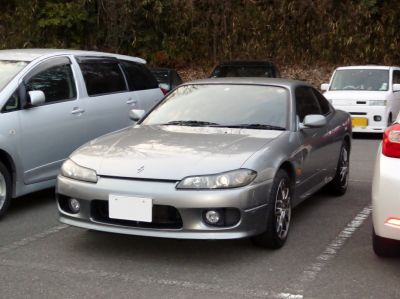
| Production: | 1999-2002 |
|---|---|
| Model Year: | 1999 |
| Length: | 4445 mm175.0 in |
| Width: | 1695 mm66.7 in |
| Height: | 1285 mm50.6 in |
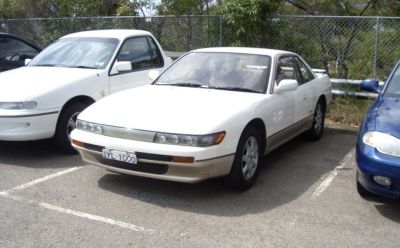
| Production: | 1988-1993 |
|---|---|
| Model Year: | 1990 |
| Length: | 4470 mm176.0 in |
| Width: | 1690 mm66.5 in |
| Height: | 1290 mm50.8 in |
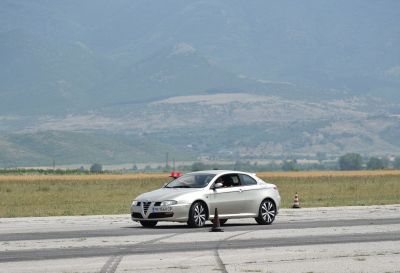
| Production: | 2003-2010 |
|---|---|
| Model Year: | 2004 |
| Length: | 4480-4489 mm176.4-176.7 in |
| Width: | 1763 mm69.4 in |
| Height: | 1355-1390 mm53.3-54.7 in |
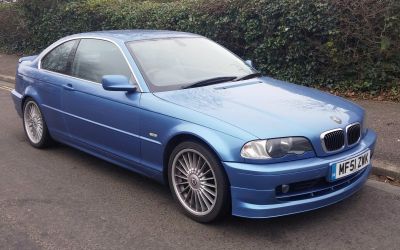
| Production: | 1999-2006 |
|---|---|
| Model Year: | 1999 |
| Length: | 4488 mm176.7 in |
| Width: | 1757 mm69.2 in |
| Height: | 1367 mm53.8 in |
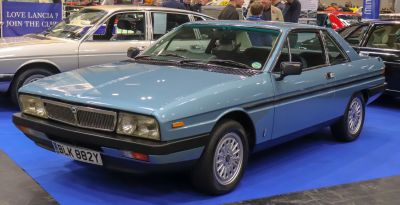
| Production: | 1980-1981 |
|---|---|
| Model Year: | 1976 |
| Length: | 4485 mm176.6 in |
| Width: | 1730 mm68.1 in |
| Height: | 1330 mm52.4 in |
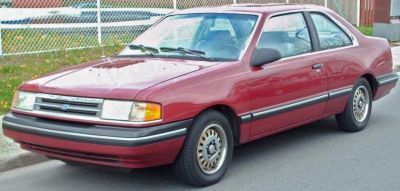
| Production: | 1987-1995 |
|---|---|
| Model Year: | 1988 |
| Length: | 4490 mm176.8 in |
| Width: | 1735 mm68.3 in |
| Height: | 1340 mm52.8 in |
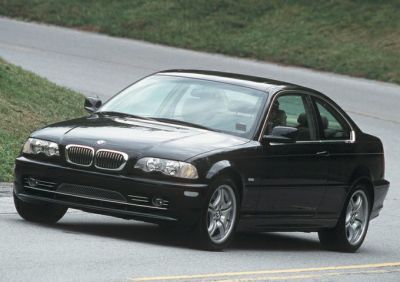
| Production: | 1999-2003 |
|---|---|
| Model Year: | 1999 |
| Length: | 4490 mm176.8 in |
| Width: | 1757 mm69.2 in |
| Height: | 1370 mm53.9 in |
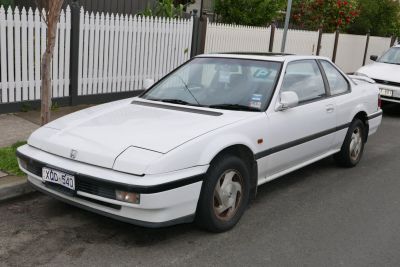
| Model Year: | 1987 |
|---|---|
| Length: | 4460 mm175.6 in |
| Width: | 1695 mm66.7 in |
| Height: | 1295 mm51.0 in |
